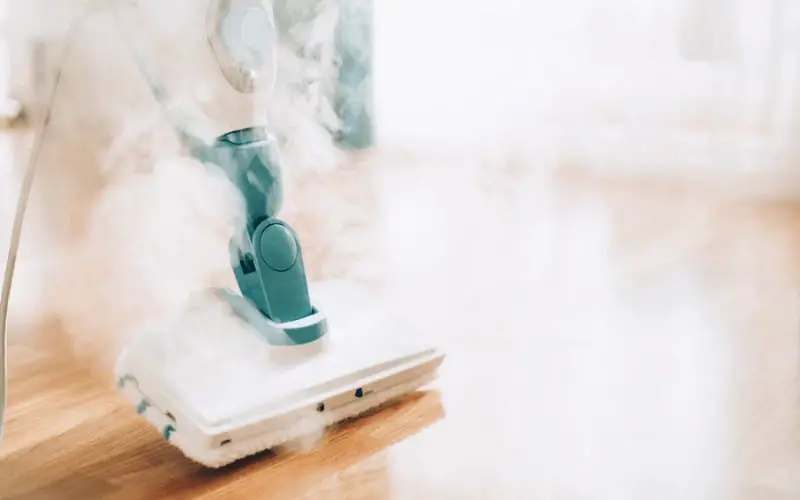Recently in the cleaning world, steam mops have become a popular sensation. But that comes as no surprise, these “bad boys” can sanitize the floor and clean it at the same, and they do this without any cleaning chemicals.
With so many chemicals already been used and pumped into our biosphere, steam mop gives you that step forward in bettering our environment but are Are steam mops worth it? Are they any better than the cheaper alternative of traditional mopping?
In this article, we are going to look into the pros and cons of each mopping method, and you get to answer the questions yourself.
Read: How much is a shark steam mop
Are Steam Mops Worth It
Table of Contents
A steam mop is a machine that has a that creates hot jets of dry steam with the aid of its built in water steam jet, the helps in deep-cleaning the floor as the steam penetrates through the mop head.
Some steam mops aren’t limited to cleaning floors, you can also clean windows, bathrooms, wall tiles and even sofa. Thanks to its detachable water tank, it can be used as a handheld cleaner with the aid of attachments such as squeegees, upholstery tools and scrubbing brushes.
Read: 9 Best Bathroom Steam Cleaner
Traditional mopping, on the other hand, basically involves the use of a mop and a bucket. A mop has a very high-water absorbance capacity, and this aids its cleaning abilities.
Traditional mopping is way less expensive compared to steam mopping; all you need for this type of mopping is a bucket, mop, detergent, and water.
However, this is a time-consuming task and not very sanitary as the mop tends to just transfer the dirt from one area to the other rather, and to prevent this from happening, you will need a lot of water changes; it is labor-intensive and time-consuming.
There are dozens of other differences that are making us ask the question; Are steam mops worth it? And we are going to look at each of them.
Effort Required
Steam mops require less manual effort compared to traditional mopping. All you need to do with a steam mop is fill up its reservoir with water and turn it on and just glide the machine over the floor surface.
It’s that easy, but you can’t say the same for mop and bucket mopping, where not only do you get to drag a bucket of water along, you also need to scrub the floor with the mop using firm pressure. So steam mops win this round.
Cleaning Process
The cleaning process for steam mop includes;
- Taking out your steam mop from the storage
- Fill its water tank with distilled water and attach its cleaning pad to the mop head.
- Turn on the mop Depending on the type of steam mop you have, if you have a corded steam mop, plug it in; if you have a cordless steam mop, you should make sure it has a full charge.
- After plugging it in, you have to wait for a couple of seconds to allow the water to heat up. The amount of time you will need to wait will depend on the type of steam mop you have.
- Once the water heats up and begins to produce steam, you can start to clean. Just move the mop around, and its pads will pick up dirt particles and dust.
- When you are done cleaning, simply unplug your steam mop and take it back to storage; if you have a cordless steam mop, it is recommended to always charge it after each use.
The cleaning process for traditional mopping includes;
- Preparing a water and cleaning solution mixture in a bucket, then set up the mop unit.
- To clean, you have to immerse the mop into the soapy mixture and make sure every fiber of the mop is completely saturated with the liquid.
- Before using the mop to scrub the floor, you have to wring out excess water from the mop, and you can start scrubbing using firm pressure.
- Once the mop gets too dirty, you will need to rinse it inside the bucket, wring out the excess water and repeat the process.
- Depending on how dirty the surface you are cleaning is, you may need to go over it a couple of times. Once you achieve your desired results, you will need to empty the bucket contents and rinse the mop. Then store properly.
From this simple process breakdown, you can already tell which is the winner of this round; steam wins, of course! They are just so easy to use.
Cleaning Abilities
A steam mop is highly sought after mostly because of their sanitization abilities. Steam mop also carries out their cleaning process using just water instead of those chemicals you make use of in traditional mopping.
Steam mop utilizes very high-temperature steam to kill germs and bacteria on the surface. To achieve something like this with traditional mopping, you would need to mix detergents, bleach, and other potentially dangerous chemicals to achieve the same level of cleanliness.
So you can have your kids or pets playing on the floor without being concerned about the floor’s cleanliness. So steam mop wins again.
Affordability
Steam mops cost way more than a regular mop and bucket. Because they require higher manufacturing costs to produce, so they go for a couple more bucks than mop and bucket.
But you have to keep in mind that you need only water to use a steam mop, but you will need to get cleaning solutions, bleach, and some other cleaning products in order to use a mop and bucket.
So this cost over time can make up the price difference. However, it is recommended to use only distilled water in your steam as it helps to prevent the buildup of minerals that could occur using regular tap water.
So traditional mopping is the cheapest option among the two options.
Read: Best Mop Bucket Review
Power Requirement
bucket and mop do not need any electricity plugged in before you can make use of it; it is manually operated, so you don’t have to worry about charging or batteries.
Steam mop, on the other hand, is available as either corded or cordless. The cordless models make use of batteries and need to be charged for a couple of hours before it can be used, while the corded models have cords that are used to plug in the steam mop into a power outlet.
This corded models don’t usually have long cords and can make maneuverability an issue. Also, with the corded models, the area you are cleaning needs to have a power outlet nearby, and for the cordless, you may need to have extra batteries handy, especially if you are cleaning large areas before most of them don’t have long runtime.
So traditional mopping wins this round because, with it, all you need to do is pick up your mop and bucket. There is no involvement of electricity.
Read: Best Steam Mop Review
Weight
Steam mops compared to regular mop is very heavy, but if you factor in the bucket of water you will need to push around with you when using a regular mop, you will find out that traditional mopping has almost the same weight (if not more than) as a steam mop.
No one wins this round.
Drying Time
When using a steam mop to clean, it takes lesser time for the leftover moisture to evaporate and the floor to become completely dry compared to traditional mopping.
This makes steam mopping a great option for hard surfaces and commercial areas. Traditional mopping, on the other hand, may require you to go in with a dry clean cloth to remove residual moisture from the floor. This again puts traditional mopping behind steam mops.
Versatility
Due to the usage of high-temperature steam, steam mops can damage some floors. It is recommended that you shouldn’t use steam mops on floors like laminate, hardwood, or vinyl.
Although some people say it works perfectly for them, many manufacturers are against it. In fact, using a steam mop on some laminate floor will cause you to lose your warranty.
Traditional mopping can be used to clean a different variety of floors. This is because you get to determine the amount of heat, moisture, and cleaning that gets on the floor; this way, your cleaning can be customized to suit every floor surface.
Attachments
Steam mop usually comes with different attachments included. These different attachments can be used to steam clean anything from car interiors, kitchens, and windows to sliding doors, mirrors, and furniture. So with a steam mop, you can basically clean your entire house.
But the same cannot be said about traditional mopping as it is suitable for only one surface; the floor.
Steam Temperature
The steam produced by a steam mop can get really high if not properly kept under check while usage. Although the steam is the most important part of the steam mop, it can also pose a safety hazard. The user needs to be aware of the steam and must understand how to safely use it to avoid any kind of injury
Quick Clean-Ups
This factor only favors the microfiber mop head used in traditional mopping. This is because Microfiber has the ability to reduce bacteria by 99 percent and has a static electric charge, which enables it to hold on to dirt and dust effectively.
The fibers work to trap any dirt present on your floor, and this makes traditional mopping better than steam mop as it is excellent for light clean up and cleaning up spills.
Deep Cleaning Abilities
With steam cleaning, you may find out that you may need to clean a little more often compared to traditional mopping. This is because, with traditional mopping, you get to firmly scrub the floor with the mop, unlike with a steam mop where you just glide over the surface.
However, this only has a significant difference depending on the type of floor and stain that you are cleaning. Also, A lot of steam cleaners can be maneuvered into small grooves and closed off corners on the floor where a mop may not be able to reach.
Cleaning Carpets
You can’t use a traditional mop and bucket method to clean a carpet; it would totally ruin it. But you can actually make use of a steam mop to sanitize and clean carpets in between deep cleaning.
Conclusion
What do you think? Are steam mops worth it? This question can only be answered by you alone, depending on your cleaning needs. Because in the end, they are both an excellent way of cleaning floor surfaces.
Hopefully, this article has been able to break down the pros and cons of both cleaning methods so you can make the best choice.

